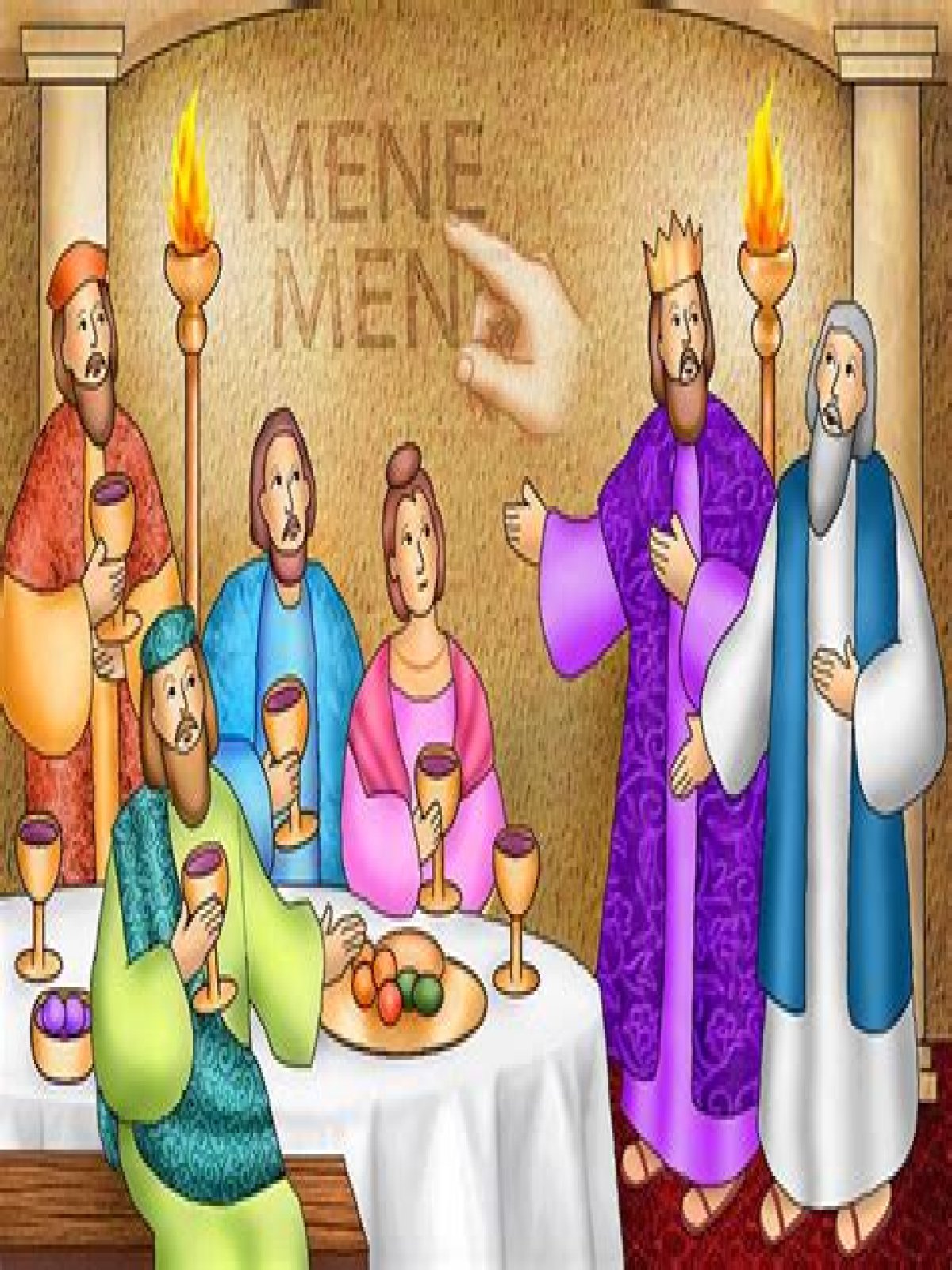Which king saw the disembodied hand writing on the wall?
- Which king saw the disembodied hand writing on the wall?
- What was the handwriting on the wall in the Bible?
- Can read the handwriting on the wall?
- What two empires does Daniel end up working for?
- Who came first Nebuchadnezzar and Darius?
- What is Mene Tekel in magic?
- What did the king write on the wall?
- Where did King Belshazzar see writing on the wall?
- What does the Bible say about the writing on the wall?
Which king saw the disembodied hand writing on the wall?
The king’s banquet and the mysterious oracle: the king desecrates the sacred vessels, the hand writes on the wall (verses 1–6)
What was the handwriting on the wall in the Bible?
While a king was holding the Jews (see also Jews) captive in the foreign land of Babylon (see also Babylon), in the sixth century b.c., a mysterious hand appeared, writing on the wall of the king’s palace. The king called upon Daniel, who interpreted it to mean that God intended the king and his kingdom to fall.
When was Belshazzar king of Babylon?
Reign of Nabonidus, King of Babylon (556-539 BC). Yale University Press.
What does Mene Mene Tekel Upharsin?
mene, mene, tekel, upharsin. / (ˈmiːniː ˈmiːniː ˈtɛkəl juːˈfɑːsɪn) / noun. Old Testament the words that appeared on the wall during Belshazzar’s Feast (Daniel 5:25), interpreted by Daniel to mean that God had doomed the kingdom of Belshazzar.
Can read the handwriting on the wall?
Definition of see/read the writing/handwriting on the wall : to be aware that something bad will probably happen soon No one told him he was going to be fired, but he could see the writing on the wall.
What two empires does Daniel end up working for?
the Babylonian Empire. the Medo-Persian Empire. the Greek Empire. the Roman Empire, with other implications to come later.
Who said the writing’s on the wall?
This idiom comes from the Biblical story of Belshazzar’s feast, Daniel 5:5-31, in which, in the presence of the king, a disembodied hand appears and writes on the palace wall. The king, frightened, called for astrologers, Chaldeans, and soothsayers and offered rewards to whoever could interpret the writing.
Was Nebuchadnezzar a believer?
After the first dream, Nebuchadnezzar respects God’s wisdom. After the furnace, Nebuchadnezzar respects God’s loyalty. And then after his period of madness and loss of title and humanity, he respects God’s power. It’s only then that we see Nebuchadnezzar become a true believer.
Who came first Nebuchadnezzar and Darius?
| Nebuchadnezzar III | |
|---|---|
| Reign | September/October – December 522 BC |
| Coronation | 3 October 522 BC (?) |
| Predecessor | Bardiya (Achaemenid Empire) |
| Successor | Darius I (Achaemenid Empire) |
What is Mene Tekel in magic?
The Mene-Tekel (or Menetekel Deck or The Self-Shifting Pack) is a mechanical deck credited to Burling Hull (1910). A trick deck usually refers to a deck of playing cards that has been altered in some way to allow magicians to perform certain card tricks where sleight of hand would be too difficult or impractical.
Where does the phrase the handwriting on the wall come from?
What was the meaning of the handwriting on the wall?
Daniel 5:5-12 – What was the Meaning of the Handwriting on the Wall? The fingers of a “man’s hand” appear and write on the wall while the drunken party is continuing. This writing appears on A wall “near the lampstands” so the king can clearly see the hand writing the words.
What did the king write on the wall?
“As they drank the wine, they praised the gods of gold and silver, of bronze, iron, wood, and stone” (Daniel 5:4, New International Version). At the height of the festivities, the king was terrified when, without warning, a disembodied hand appeared and began writing a message on the wall.
Where did King Belshazzar see writing on the wall?
An artist’s concept of the miraculous writing on the wall that King Belshazzar saw (Graphic © V. Gilbert & Arlisle F. Beers, visualbiblealive.com). The fifth chapter of Daniel records a noteworthy and revolting scene of lavish partying that occurred in 539 B.C. The place was Babylon, the capital of the Chaldean Empire.
Who was the king that had a floating hand?
God gave Daniel the gift of understanding to interpret dreams and prophecies and even the strangest of sights—the handwriting of a floating hand that appeared in the banquet room of Belshazzar, the last Chaldean king of Babylon.
Where was the hand that wrote on the wall?
“Suddenly the fingers of a human hand appeared and wrote on the plaster of the wall, near the lampstand in the royal palace. The king watched the hand as it wrote.
“As they drank the wine, they praised the gods of gold and silver, of bronze, iron, wood, and stone” (Daniel 5:4, New International Version). At the height of the festivities, the king was terrified when, without warning, a disembodied hand appeared and began writing a message on the wall.
An artist’s concept of the miraculous writing on the wall that King Belshazzar saw (Graphic © V. Gilbert & Arlisle F. Beers, visualbiblealive.com). The fifth chapter of Daniel records a noteworthy and revolting scene of lavish partying that occurred in 539 B.C. The place was Babylon, the capital of the Chaldean Empire.
What does the Bible say about the writing on the wall?
Nevertheless, I will read the writing to the king and make known to him the interpretation. 18 O king, the trembled and feared before him. Whom he would, he killed, and whom he would, he kept alive; whom he would, he raised up, and whom he would, he humbled. 20 But
